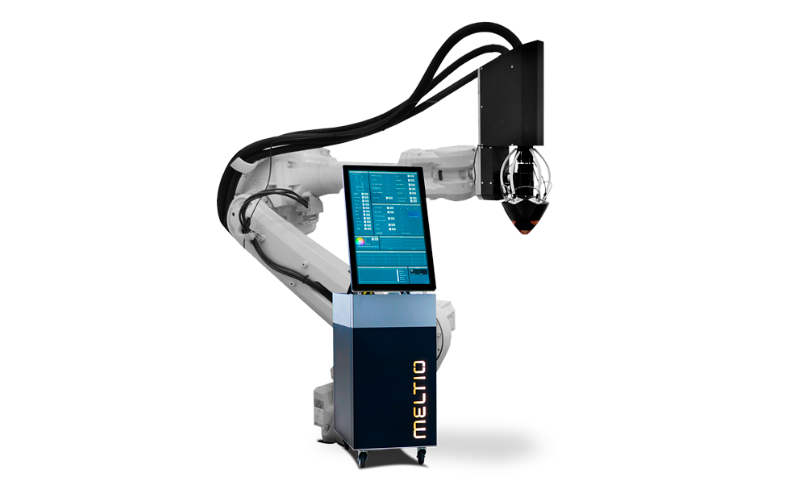Metal 3D printing company Meltio has unveiled the Meltio Robot Cell, a solution designed to improve the performance of industrial robotic arms in metal additive manufacturing.
This system integrates with Meltio’s slicing software dubbed Meltio Space, providing better control over the entire metal 3D printing process. The Meltio Robot Cell represents a significant hardware development, enabling standard metal 3D printing and supporting part repair or additions.
Meltio’s Engine Product Manager, Alejandro Nieto said, “Meltio Robot Cell also provides the industrial customer with a working protocol. Relative to existing offerings in the market today, the Meltio Robot Cell is very competitively priced and its price is below 300,000 dollars ex works. The cost of the solution is also competitive when compared with thermoplastic and concrete 3D printing systems as seen in other sectors that demand 3D printing for structural parts. This cell has the possibility to be delivered with other robot brands on the market to be more responsive to customers in terms of availability and technical capability. Meltio Robot Cell is compatible with the open hardware platform that allows Meltio to integrate our metal 3D printing head on any brand of robotic arms.”

A versatile and compatible metal 3D printing solution for industrial needs
The Meltio Robot Cell offers versatility and compatibility with a range of robotic arms, providing a consistent solution for users. Its workspace is designed to accommodate diverse manufacturing requirements, utilizing advanced additive manufacturing technology and Meltio’s metal 3D printhead to autonomously produce parts in an industrial environment. Safety and monitoring features are integrated into the system, with the robotic components securely enclosed in a laser-safe environment.
Meltio’s goal is to cater to various industrial needs for metal parts printing, serving a broad spectrum of applications required by industries and integrators. Its standardized approach enables seamless integration with custom solutions through Meltio’s network of partners. The system is user-friendly, functioning as a plug-and-play solution that only requires a single electrical power supply and inert gas supply. The system operates under standard environmental conditions and should not be placed outdoors or exposed to sunlight and dust. It necessitates placement within a controlled environment for proper functioning.
Certified and tested with ABB robotic arms in its standard configuration, the Meltio Robot Cell is suitable for various industries. It builds on the Meltio Engine Robot Integration and offers a foundational production model for incorporating Meltio’s metal 3D printhead into robotic production systems, according to the manufacturer.
“Meltio’s main commitment with the launch of Meltio Robot Cell is to offer all types of industries the ability to manage the entire manufacturing process using our metal 3D printing technology consisting of a Meltio head integrated in a robotic arm and in a safe environment, in order to just produce parts. This new hardware system allows the customer to receive a ready to use cell for robotic metal 3D printing, removing the integration process and long assembly lead times. The Meltio Robot Cell has a specific area for every supply the cell requires on a daily basis, only connecting to the inert gas and electric supply is enough to start manufacturing,” added Nieto.

Technical specifications of Meltio Robot Cell
| Load | 500 kg max load (Standard) |
| Positioner Interpolation | ⌀ 1000 mm x 1200 mm |
| No Positioner Interpolation | 2000 x 1000 x 1000 mm; Custom build platform not included. No positioner movement, only robot tool orientation |
| Actively Cooled Build Platform | Build plate – 300x400mm; Build plate – 150x200mm; Build plate – 120x100mm |
Who will win the 2023 3D Printing Industry Awards? Make your nominations now!
What does the future of 3D printing for the next ten years hold?
What engineering challenges will need to be tackled in the additive manufacturing sector in the coming decade?
To stay up to date with the latest 3D printing news, don’t forget to subscribe to the 3D Printing Industry newsletter or follow us on Twitter, or like our page on Facebook.
While you’re here, why not subscribe to our Youtube channel? Featuring discussion, debriefs, video shorts, and webinar replays.
Are you looking for a job in the additive manufacturing industry? Visit 3D Printing Jobs for a selection of roles in the industry.
Featured image shows Meltio Robot Cell. Photo via Meltio.


